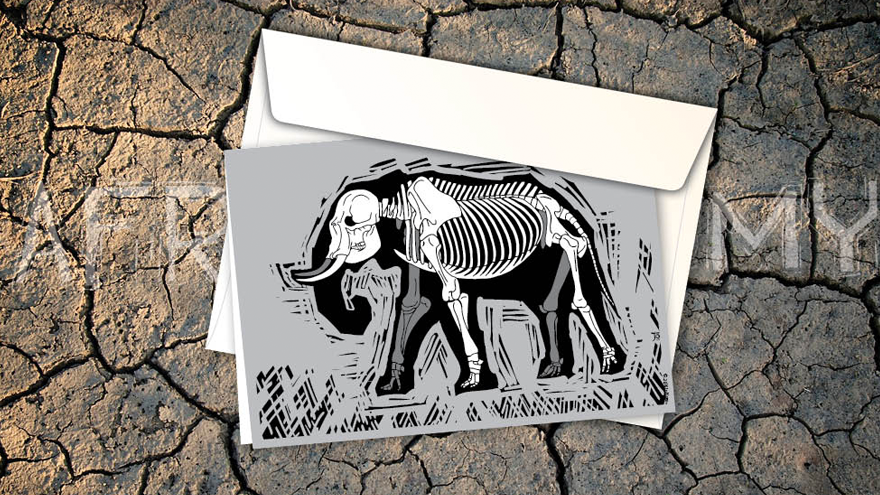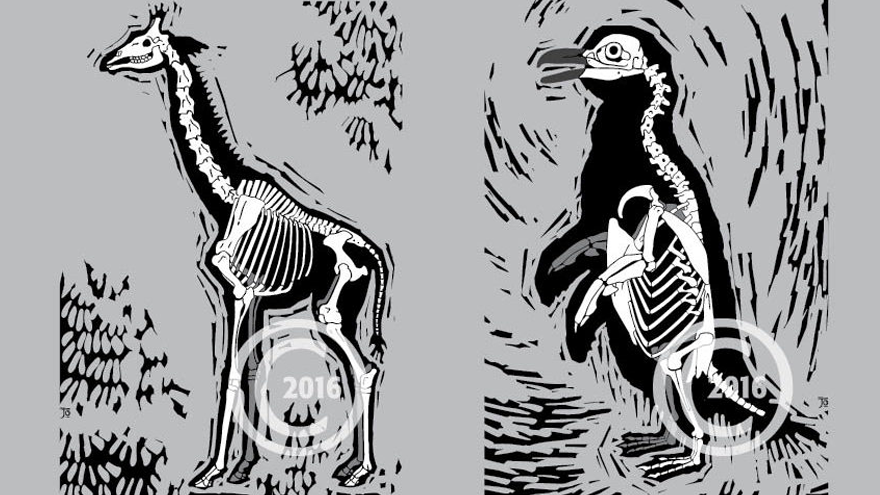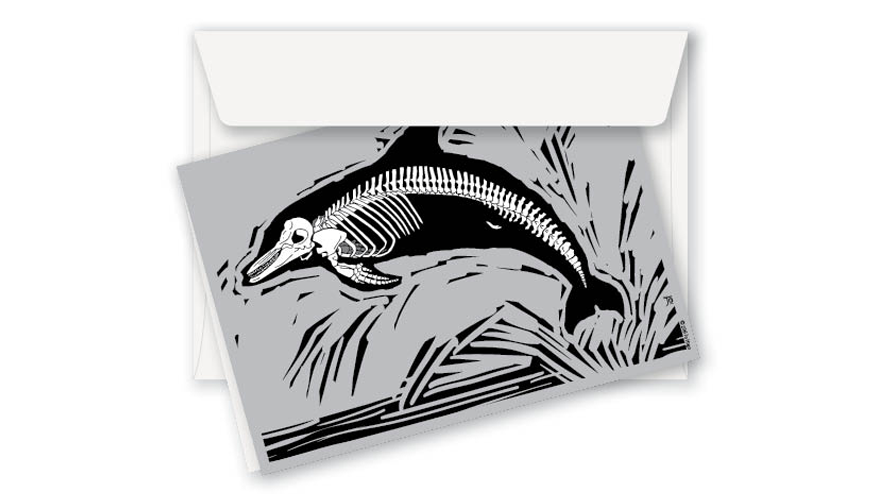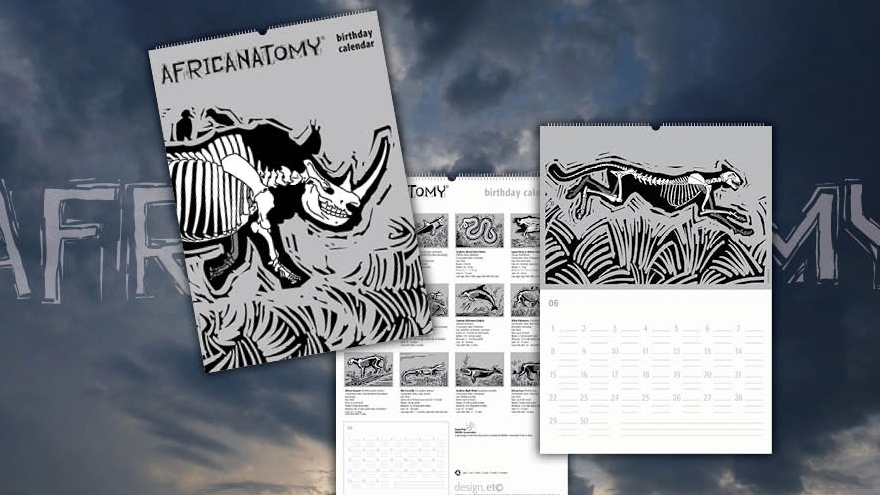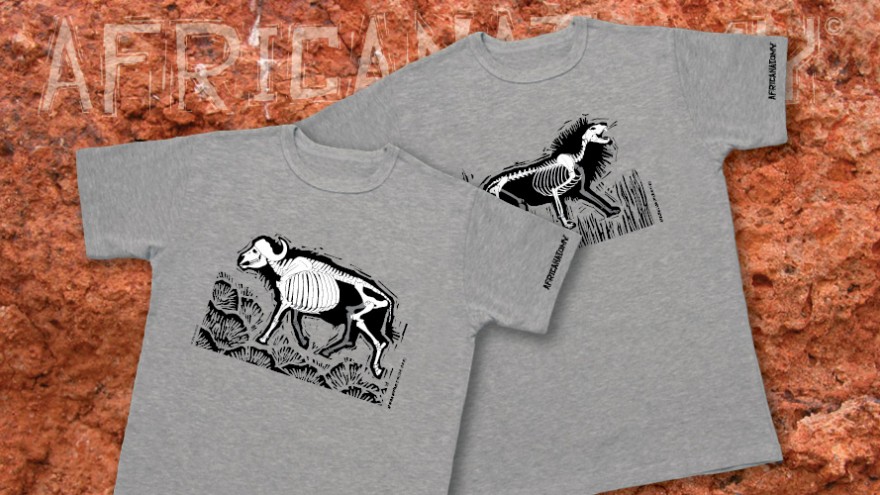AfricAnatomy is the new series of illustrations by South African designer Jo Hugo. Based in the quiet seaside town of Knysna, she creates skeletal drawings of the country’s most iconic animals including rhinoceros, lion, giraffe and penguin.
The designs are featured on various stationery items such as greeting cards, calendars and T-shirts that can be found on AfricAnatomy’s website. A portion of the proceeds generated by the AfricAnatomy products is donated to local Wildlife conservation trusts, of which a new trust is chosen each year to benefit the welfare of Africa’s fauna.
We asked Hugo about the inspiration behind this self-initiated illustration project.
"I spent quite a while trying to find an interesting and off-beat approach to wildlife that would be gently educational and fun. Having grown up in Tanzania in a wildlife-rich area, I have a long-term interest in the subject. I was actually working on a completely different direction, finding references for an elephant illustration, when I came across an old anatomical drawing with the outline body shape. That was the 'lightbulb' moment. I've also been collecting found skulls and bones for years now and think they're beautiful objects. So, not an entirely new idea, but I trust that my illustration style gives it current interest and appeal," she said.
The AfricAnatomy illustrations are a kind of dissection of the animal kingdom, portraying the skeletal composition of each animal in direct side-on view. Hugo invites the viewer to compare the physical likeness (or dissimilarity) that different species have with one another as evidenced by their bones.
On the design process that took place in the making of these stationery items, Hugo explains, "Firstly, an overview of the animal range and deciding which wildlife to feature is needed – where does one stop? Then research to find reliable sources for the skeletons, followed by hand drawing of the skeleton, scanning and refining in Adobe software. Then I review and tweak the artworks to work as a range. There were plenty of rejected versions along the way..."
The handmade illustrations are subdued in black, white and grey, relying on the visual complexity and true-to-life form of each skeleton as opposed to vivid use of colour. Hugo’s style resembles that of linocut printing – it is as if the uppermost layer of each drawing is scraped away physically, revealing the delicate bones of the animal beneath.
The artist describes her commitment to wildlife welfare and the process of choosing an eligible conservation trust.
"I believe strongly in conservation & wildlife rights and I wanted to give something back to the source of my products. One wildlife conservation trust, which will need to be active in South Africa, will be chosen each year for a donation based on proceeds from sales. Individual trusts range over a broad spectrum – from protecting specific endangered species (e.g. The Rhino Foundation which fights rhino poaching through addressing the source demand for rhino horn), campaigning for the conservation of vital habitat areas (e.g. wetlands and breeding grounds), animal rehabilitation, education and community participation programmes, to anti-poaching measures, and more."
Hugo’s fascination with wildlife is a longstanding one. She was born in Kenya and grew up amongst the farmland foothills of Mount Kilimanjaro, home to well-known members of Africa’s wildlife including the leopard, hyena, giraffe and water buffalo. She completed formal training at the Dun Laoghaire College of Art & Design in Dublin, Ireland, before returning to the southern shores of Africa.

